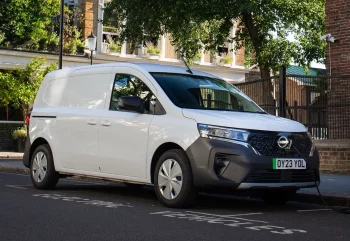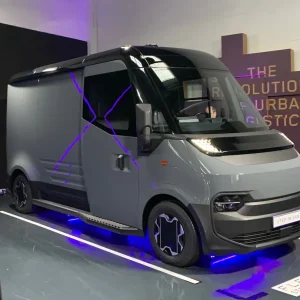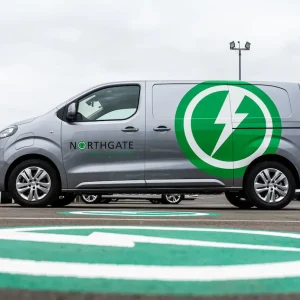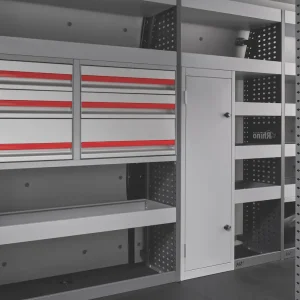
While the momentum behind the growth in battery electric vans had so far rested with the big fleet operators, the used market might offer a cost-effective toe-in-the-water for small businesses looking to move into electric propulsion. Pence-per-mile running costs can be as little as half that of a similar diesel LCV for those sole traders who can charge at home, whilst city centre ULEV zones or the desire to promote a green image may tempt others. Being a Nissan LCV, the Townstar’s underpinnings are shared with its Renault sibling, the Kangoo E-Tech, and badged-sister the Mercedes-Benz eCitan. All share a 45kWh battery pack and a 90kW (120hp) electric motor driving the front wheels. It produces 245Nm of torque, and being electric does so from standstill throughout the whole speed range up to a maximum of 84mph.
Near-silent EV refinement is a given and because it’s based on the same platform as the Nissan Qashqai and Renault Austral, it’s surprisingly car-like to drive. A Transit Custom is more engaging to thread around winding country roads, the Townstar always feels a bit remote, but its ease of driving is a bonus and in city traffic it excels. EV-style acceleration is strong without being ludicrous – destabilising cargo or occupants – whilst a ‘city’ mode of greater steering assistance is as redundant today as it was when Fiat introduced it on the Punto van 30 years ago.
Three levels of regenerative braking are available using the gear lever in a side-gate then fore and aft movement – think Sport mode, then plus/minus shifts in a conventional auto. There’s no one-pedal option like a Nissan Leaf car, which
is a shame, since once attuned it’s quite intuitive.
The interior quality is ahead of Stellantis rivals and up there with Ford and VW. Storage is generous, with an overhead tray, big lidded glovebox and bottle holders in the door bins, but only left-hand driver Townstars get the hinged bulkhead for over length loads. A pity. An 8in screen offers all the usual phone-linking and has proper built-in navigation too.
Traditionally, EVs have lacked payload, but as it was a clean sheet design, rather than an electrified existing van, the Townstar fares well with 600kg in the shorter version and 800kg in the longer, whilst another EV shortcoming, that of towing capacity, is addressed too, some 1,500kg of trailer can be hauled; double that of some rivals.
Despite that it’s a compact enough van, L1 and L2 variants sharing a 2,160mm overall width, and 1,815mm height. Wheelbases are 2.7 and 3.1 metres respectively, giving overall lengths of 4.5 and 4.9 metres. That translates into load lengths of 1.8 and 2.2 metres with internal widths of 1.57 at best and 1.25 metres between the wheel arches. With internal headroom of 1,215mm each, the load volumes stand at 3.3 and 4.3m3.
When it comes to range, the official figure is 183 miles, which in itself will be near-impossible to achieve, but makes for a real-world 150 miles or so. Of course, EVs break the rules on consumption, you’re better-off crawling through city traffic than blasting around the ring-road, so for local trades the Townstar should avoid range anxiety and it can charge at 11kW AC giving a full recharge in five hours. The Acenta grade gets a faster 22kW AC on-board charger and support for 80kW DC rapid charging too.
Plus: Low running costs, decent range, high towing capability.
Minus: Moderate payload in L1, only one battery option, lacks rapid-charge ability.
| Version | Plate | Year | Mileage | Price (ex VAT) |
| L1 Tekna 90kW (120bhp) | 23 | 2023 | 200 | £20,995 |
| L1 Acenta 90kW (120bhp) | 73 | 2023 | 50 | £20,995 |
| L1 Tekna 90kW (120bhp) | 24 | 2024 | 2,100 | £19,975 |
| L2 Acenta 90kW (120bhp) | 74 | 2024 | 100 | £19,695 |
| L2 Tekna 90kW (120bhp) | 74 | 2025 | Delivery | £19,490 |





